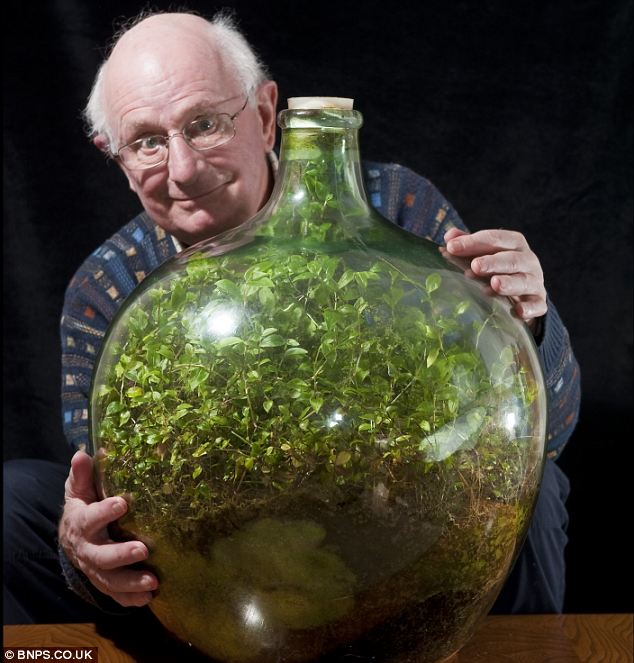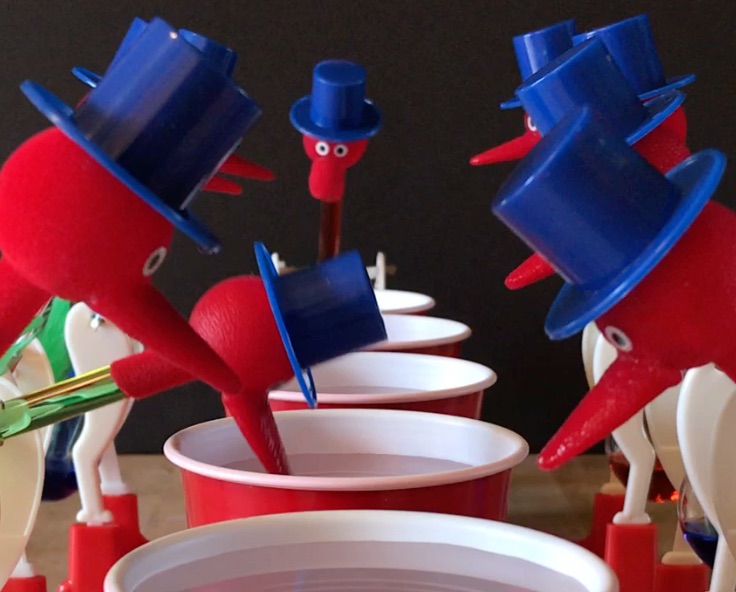Coupled Pendulum
Description: The coupled pendulum can be created with either string or a spring connecting the two pendulums. With each swing energy is transferred from one pendulum to the other. If the pendulums both have the same length one pendulum comes to a complete stop before alternating motion. This phenomenon can be used to show balanced and unbalanced forces, how motion can be used to predict future motion, and the conservation of energy.
Web Resource: L.R. Ingersoll Physics Museum
Giant Newton's Cradle
Description: The coupled pendulum can be created with either string or a spring connecting the two pendulums. With each swing energy is transferred from one pendulum to the other. If the pendulums both have the same length one pendulum comes to a complete stop before alternating motion. This phenomenon can be used to show balanced and unbalanced forces, how motion can be used to predict future motion, and the conservation of energy.
Web Resources: Giant Newton’s Cradle Website, Wikipedia article
Google Maps Timelapse
Description: The Google Maps Timelapse engine allows you to see the impacts of humans on local environments over the last three decades. Use the search box to find local human impacts.
Local phenomenon (e.g. housing developments, logging, shrinking water reservoirs, etc.) can lead to local solutions to human impacts on the land and water.
Web Resource: Google Maps Timelapse
Magnetic Slime
Description: Students can create magnetic slime using iron filings. A powerful magnet can move and be consumed by the slime.
Web Resource: How to Make Magnetic Slime
Floating Whiteboard Ink
Description:
I learned about this phenomenon when a teacher spilled their water on my whiteboard. Make sure to use a plate with an impermeable surface. It's a great phenomenon for intermolecular forces. Surface chemistry, temperature, color, ink type, polarity, salinity, and many more factors affect this phenomenon.
Web Resources: Drawing on Water - It is so surreal - YouTube
Ecosphere Sealed for Over 50 Years
Description: According to this Daily Mail article David Latimer has had a sealed ecosphere for over fifty years that he has only watered once.
Web Resource: Daily Mail article
The Arecibo Message
Description: The Arecibo message was an interstellar radio message containing information about life on our planet. The message contained 1679 (semiprime) bits of information that could be organized into the graphic seen below. The message contained information on our planetary system, genetic information, human dimensions, and the Arecibo telescope.
Web Resources: Arecibo Message - Wikipedia
Termite Olympics
Description: This video shows the behavior of worker termites released onto a piece of paper with the Olympic rings drawn in pen. Termites will follow a single line of ink as well.
Web Resource: Why do termites follow an ink line?
Magnetic Cannon
Description: The magnetic cannon contains four spaced neodymium magnets in a channel. Two balls bearings are placed between each ball bearing. When a new ball bearing is introduced a transfer of energy occurs and the final ball bearing leaves with a higher initial velocity than the first. This is a great phenomenon for studying transfer of momentum and the energy of an object based on its position within a magnetic field.
Web Resource: Magnetic Challenge with Bozeman Science
Easter Island Deforestation
Description: The island of Rapa Nui once supported a large community of Polynesians that are best known for the massive statues (moai) pictured below. However when sailors arrived on the island in the 18th century the people were barely hanging on. What is not pictured below are any trees. Deforestation led to the collapse of this culture.
Web Resource: How Easter Island Works - How Stuff Works
The Drinking Bird
Description: The drinking bird is a toy heat engine. The source of energy in this phenomenon is a mystery to most students. It is said that Albert Einstein and his wife Elsa were fascinated with this toy when they visited Shanghai in the 1920's.
Web Resources: The Engineering of the Drinking Bird, The Drinking Bird - Wikipedia













